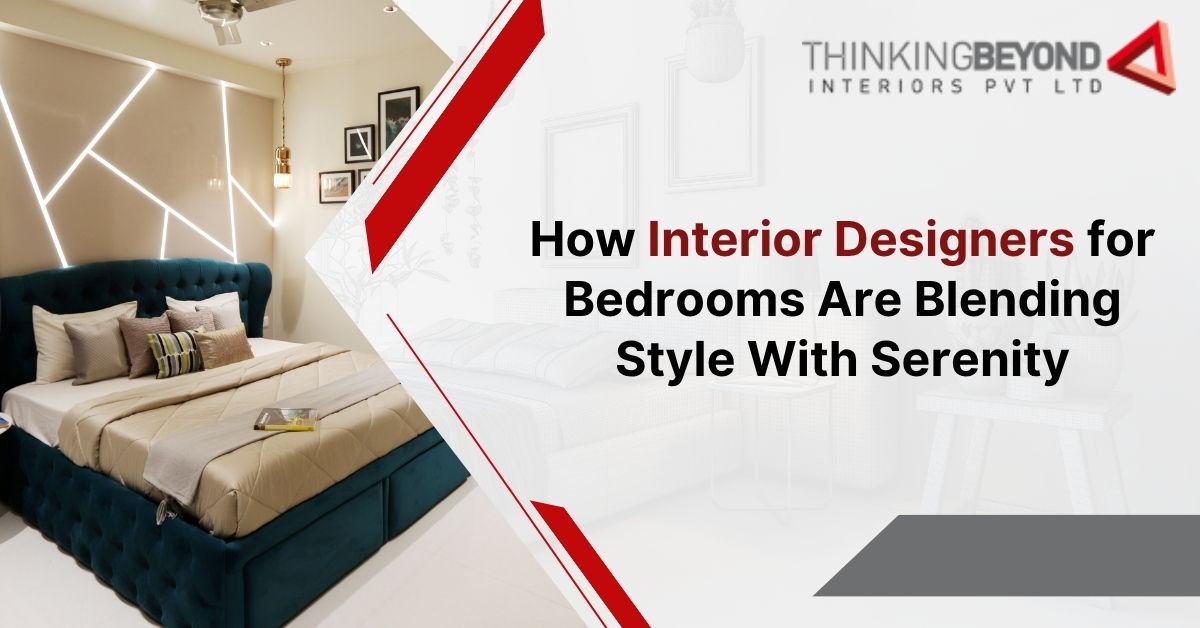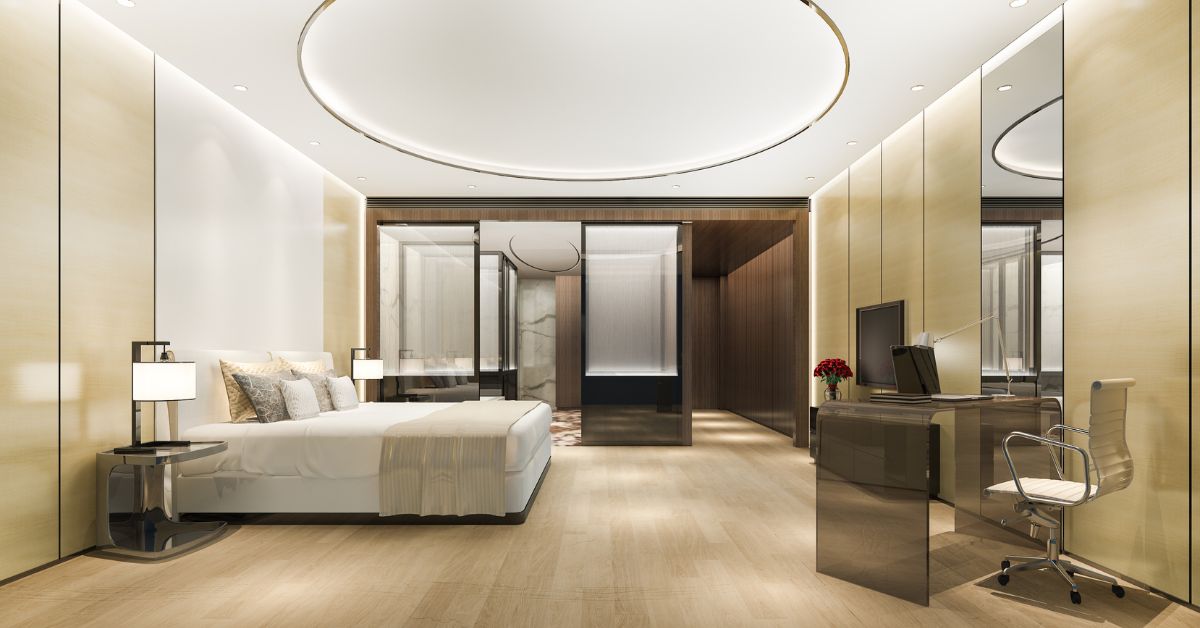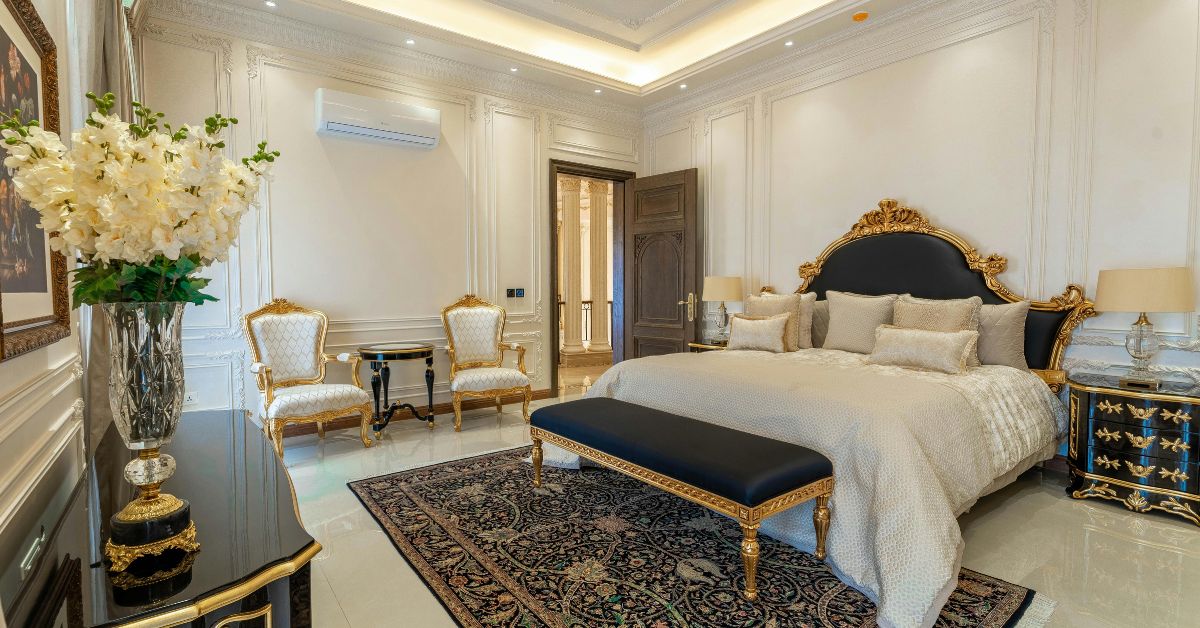
The Rise of Purpose-Driven Bedroom Design
Today, the bedroom is no longer just for sleeping. They are developing in private sanctuaries that offer peace, comfort, and emotional balance and reflect personal style. This change is largely led by interior designers for the bedroom who understand that great design is more than aesthetics - it is about what a space feels, supports welfare, and connects to a person's lifestyle. In the modern world, where stress is common, peace has become a new luxury. And it starts at home, especially in the bedroom.
Why Serenity Matters in Bedroom Interiors
The bedrooms are designed to rejuvenate us. However, highly decorated or improperly designed bedrooms can cause subconscious discomfort. Interior designers for the bedroom are now taking a more overall approach. They are selecting a system of decline to create cool color straps, natural textures, soft lighting, and a soothing environment. The trend is far from highly ornate designs and is towards purposeful simplicity. It not only makes the bedroom a place to relax, but also provides a mindful retreat.
The Elements That Bring Style and Serenity Together
Getting both style and peace in a bedroom is not a simple balancing task. Designers are cautiously orchestrating every element - from light to layout - to ensure harmony. For example, earth tones like Taupe, Beige, and Sage are replacing high-opposite walls. Linen, rattan, raw wood, and handmade ceramic bring heat and texture. The mood connects mood without a strategic lighting system through decorative fixtures and soft lamps.
Designers are also rebuilding furniture. Low-profile beds, floating nightstands, and built-in wardrobes are now popular options for creating flow and openness.
Each element is selected not only for what it looks like, but how it makes the user feel.
Personalization as a Path to Peace
One can separate peace from another. This is why the best interior designers for the bedroom begin with conversation. They detect their customers' routines, preferences, habits, and emotional needs before developing a design plan. This individual approach means that no two bedrooms look or feel.
For some, peace comes from natural light and sheer curtains. For others, it is the smell of cedarwood drawers or the sound absorption of wall panels. Designers are now integrating sensory elements - aromatherapy diffusers, acoustic insulation, blackout blinds - these stylish settings that remain functional and comfortable.
Sustainability and Natural Harmony
Eco-world material is now a defined characteristic of cool bedroom interiors. Designers are choosing an option for organic beds, non-bargain paints, and locally sourced citrus wood and fabrics. These materials not only reduce the environmental footprint, but also increase the benefits of the use of space.
The stability in the design is not a trend, but a lifestyle choice, and the bedroom is a great place to start interiors. Including indoor plants, bamboo fixtures, and recycled textiles not only reflects the thoughtful design, but also a subconscious relationship with nature, a proven contribution to peace and clarity.

Spatial Psychology and Layout Planning
The appointment of furniture can deeply affect how a room feels. A tight layout can cause stress, while a huge, flowing room encourages relaxation. Interior designers use spatial psychology to organize the bedroom in ways that feel comfortable.
For example, they can create a bed position so that it can withstand a window or avoid placing it directly in front of the door - a theory borrowed from ancient Vastu and modern feng shui. They reduce visual noise by reducing open cold bags and ensure that essential commodities are still accessible. These subtle changes can dramatically affect mental peace.
Technology That Disappears Into Design
At a time when technology pervades everywhere, bedrooms are getting technologically capable without being visually overwhelmed. Designers are integrated into interiors, climate control, and sound systems that still feel natural and unobtrusive.
Wireless charging stations are built into bedside tables. The hidden speakers are installed behind the panels. Temperature settings can be adjusted with voice commands. The goal is to offer convenience and control without renouncing visual peace.
The Emotional Impact of Bedroom Design
Our brain responds rapidly to the atmosphere that we feel consciously. Interior designers for the bedroom understand this emotional effect and design accordingly. Everything from wall color to textile choice is chosen to trigger the desired emotional response. Textures, warm colors, round shapes, and subtle artwork all contribute to a place that feels safe and comfortable. When we walk into a bedroom and feel easily easily, this is often the result of hundreds of thoughtful decisions made by a skilled designer.
Blending Tradition With Modern Tranquility
In many homes, bedrooms carry cultural or individual values. Designers are rapidly weaving traditional patterns. It creates a familiar environment that still seems to be present.
Whether it is a carved wooden headboard, vintage lamps, or handwowel throw, these elements create emotional depth and personal identity. It is born not only by design, but from memory and meaning.
Looking Ahead: The Future of Bedroom Interior Design
As our lives are shifting towards digital work, busy programs, and overstimulation, the demand for quiet individual places will only increase. The interiors of the bedroom will continue to prioritize welfare, sensory experience, and emotional balance.
Designers will further detect biophilic design, modular furniture, and sensory-responsive materials. AI-based room planners can be more common, but the essence will remain the same location that feels like a true personal migration.
Designers will further detect biophilic design, modular furniture, and sensory-responsive materials. AI-based room planners can be more common, but the essence will remain the same location that feels like a true personal migration.
Conclusions
The role of an interior designer for the blank space of the bedroom is much beyond the visual appeal. Today's professionals focus on what a space seems, supports mental health, and a quiet still enables an expressive lifestyle. They are the best-looking and functioning to help people find balance at home. In doing this, they are not just decorating the bedroom - they are designing a retreat.
And in this thoughtful revolution of restful design, Thinking Beyond pvt. limited stands out as a name that understands the power of subtle, human-focused interiors. They are not just with trends; They are again defining what it means to live well, starting from the bedroom.